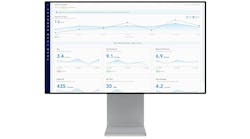In a new white paper released October 8, the American Trucking Associations set the record straight about the involvement of fatigue in large truck crashes, highlighting how anti-trucking industry interest groups wildly exaggerate its role in crashes.
“While every crash on our nation's highways is a tragedy --particularly those that involve serious injuries or fatalities--the first step toward reducing crashes is being honest about what causes them,” said ATA President and CEO Bill Graves. “We have often been told by self-appointed 'experts' that fatigue is the leading cause of truck-involved crashes, and this report clearly demonstrates that is not true.”
The white paper shows how the canard that 30% to 40% of truck crashes is just that--an exaggeration. The figure often cited by advocacy groups originated in a 1990 National Transportation Safety Board report titled: “Fatigue, Alcohol, Other Drugs, and Medical Factors in Fatal-to-the-Driver Heavy Truck Crashes.” That report focused on 182 crashes, which were generally single-vehicle crashes, where the driver of the truck was killed.
As a result, NTSB itself said it “specifically selected truck accidents that were likely to include fatigue-related accidents; that is, single vehicle accidents that tend to occur at night,” and added that the report's purpose was not to determine “the statistical incidence of fatigue.”
“ATA has been a champion for determining and addressing the true causes of crashes like increased speeds and aggressive driving,” said Mike Card, incoming ATA chairman and president of Combined Transport Inc, Central Point OR. “Reducing and managing fatigue is an important safety issue, but it shouldn't be the only safety issue as some groups want to make it.”
To read ATA's full report, click on http://www.trucking.org/AdvIssues/Safety/Documents/August%202012%20FINAL%20NTSB-Related%20Driver%20Fatigue%20Paper%20Abbreviated.pdf








